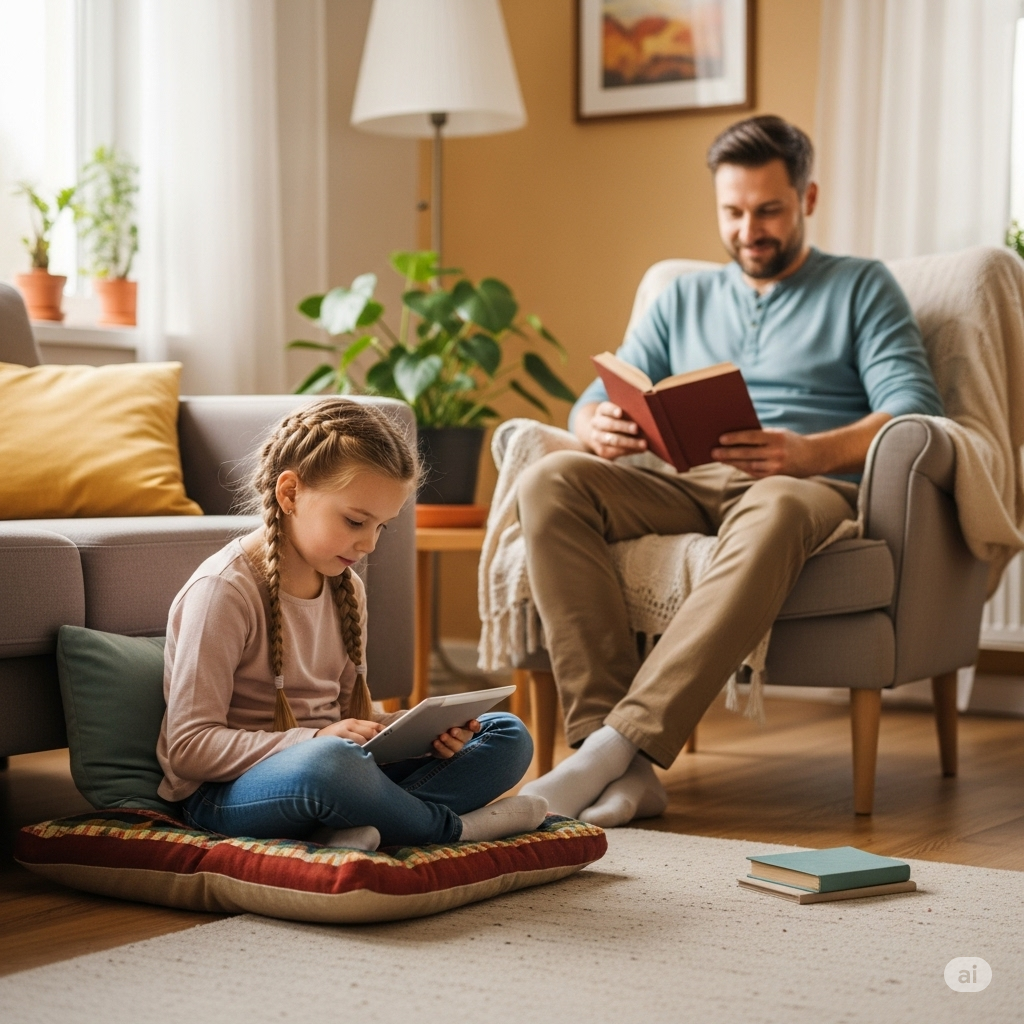Managing screen time is one of the most common struggles modern parents face. With tablets, phones, TVs, and computers all within reach, children are growing up in a digital world—often before they’re developmentally ready to handle it independently. But the goal isn’t to eliminate screens completely—it’s to create healthy boundaries and habits that work for your family.
In this article, you’ll learn how to set screen time limits calmly, avoid daily battles, and help your child build a positive relationship with technology.
Why Screen Time Matters
Not all screen time is created equal. Screens can be both beneficial and harmful, depending on:
Content (educational vs. overstimulating)
Context (alone vs. with others)
Duration (brief vs. binge)
Purpose (learning vs. distraction)
Too much or poorly managed screen time can lead to:
Sleep problems
Reduced physical activity
Mood and behavior issues
Less interest in real-world play and interaction
The key is balance—not banning.
1. Set Clear and Consistent Rules
Children need to know what the rules are—and that those rules don’t change from day to day.
Examples:
“You can have up to 1 hour of screen time after homework is done.”
“No screens during meals or in bedrooms.”
“Screens are off by 7 p.m.”
Write it down, post it on the fridge, or use a visual chart for younger children.
2. Create a Screen Time Schedule
Instead of negotiating every day, establish screen time windows.
For example:
30 minutes after school
1 movie on Friday night
Video calls with family anytime
This removes the need for daily arguments and teaches structure.
3. Use Timers or Screen Time Tools
Let technology help you manage technology. Use:
Timers on tablets and phones
Parental control apps
Smart TVs with automatic shut-off
When a timer goes off, it’s the device—not you—saying time’s up. This reduces resistance and emotional pushback.
4. Explain the Why Behind the Limits
Kids respond better when they understand the reasoning behind rules.
Say:
“Too much screen time makes it harder for your brain to rest at night.”
“When we’re on screens all day, we miss out on real fun, like playing outside or building together.”
Keep your tone respectful and factual—not fear-based or shaming.
5. Offer Screen-Free Alternatives
It’s easier to limit screens when your child has something else engaging to do.
Try:
Art supplies
LEGO sets or building toys
Nature walks
Board games
Audio stories
Rotate activities to keep them fresh and exciting.
6. Watch Together (When Possible)
Co-viewing allows you to:
Monitor content
Talk about what you’re watching
Connect and laugh together
Ask questions like:
“What do you think will happen next?”
“Would you do what that character did?”
This makes screen time more meaningful.
7. Be a Role Model
Children mirror what they see. If you’re always on your phone, they’ll want to be too.
Show healthy habits by:
Putting your phone away during meals
Leaving screens out of the bedroom
Talking about your own limits: “I need a break from screens too.”
You don’t need to be perfect—but your example matters.
8. Keep Screens Out of Bedrooms
Bedrooms should be places of rest, not stimulation.
Set boundaries like:
No tablets in bed
Phones charge in the kitchen overnight
Reading a book instead of watching a show before sleep
This supports better sleep and healthier habits.
9. Avoid Screens as a Reward or Punishment
Using screens as a bribe (“You’ll get more screen time if…”) or punishment (“No tablet for a week!”) can give them too much emotional power.
Instead:
Make screen time part of the routine
Use natural consequences: “We ran out of time today because we didn’t finish homework earlier.”
Consistency is more effective than control.
10. Encourage Mindful Use of Screens
As kids get older, teach them to be critical thinkers about screen use.
Questions to explore together:
“Does this game make me feel good or frustrated?”
“Did I learn something, or was I just zoning out?”
“How do I feel after using my tablet?”
This builds awareness and long-term digital habits.
Final Message: Boundaries = Freedom
Managing screen time doesn’t have to be a daily battle. With clear limits, empathy, and consistent routines, your child will learn how to enjoy screens without becoming dependent on them.
You’re not just limiting access—you’re teaching self-regulation, balance, and respect for their time and body.
And with that, you can move from screen-time fights… to screen-time peace.
Se quiser, posso continuar agora com o artigo 14: “How to Discipline with Kindness and Respect”. Deseja que eu continue?
